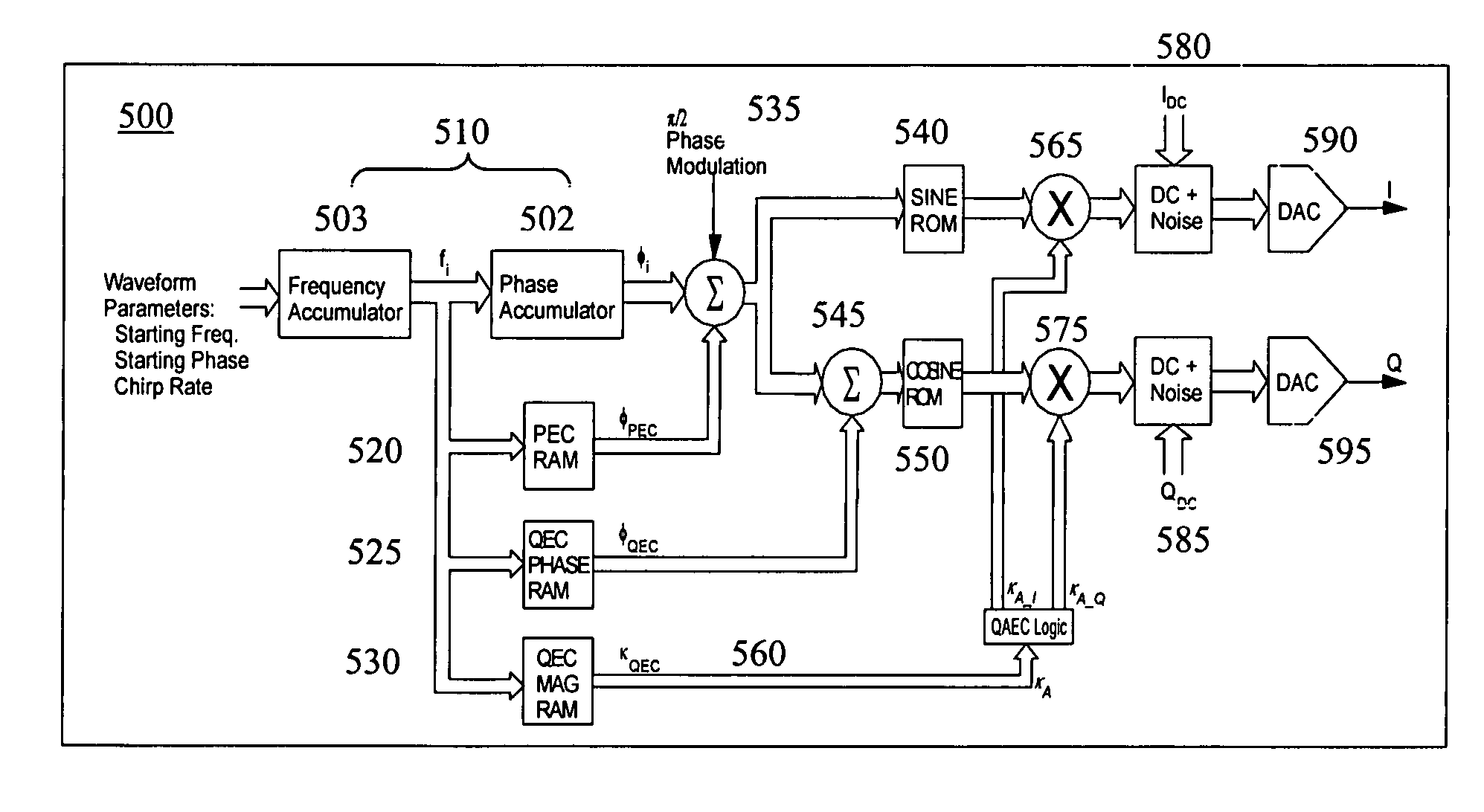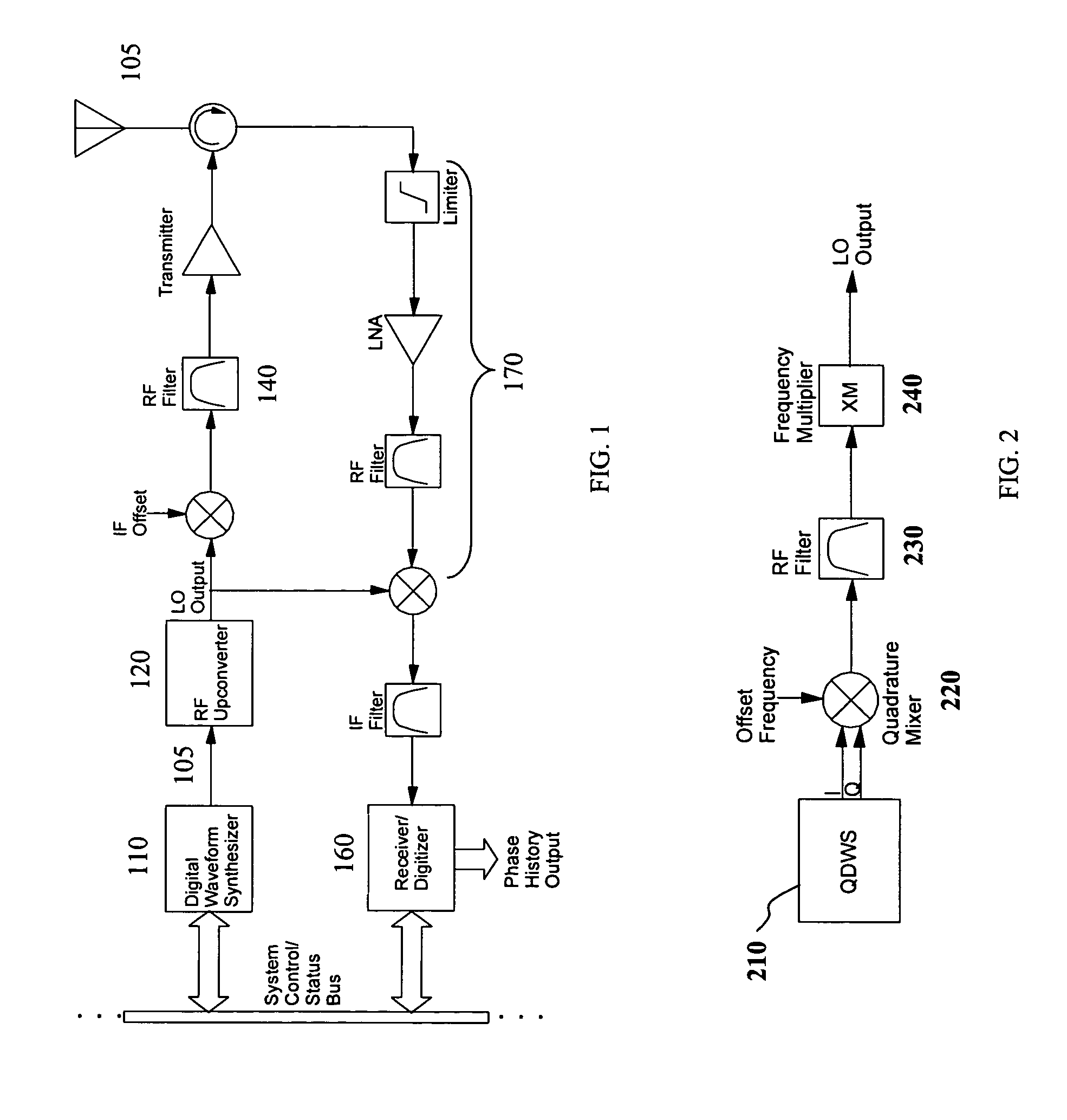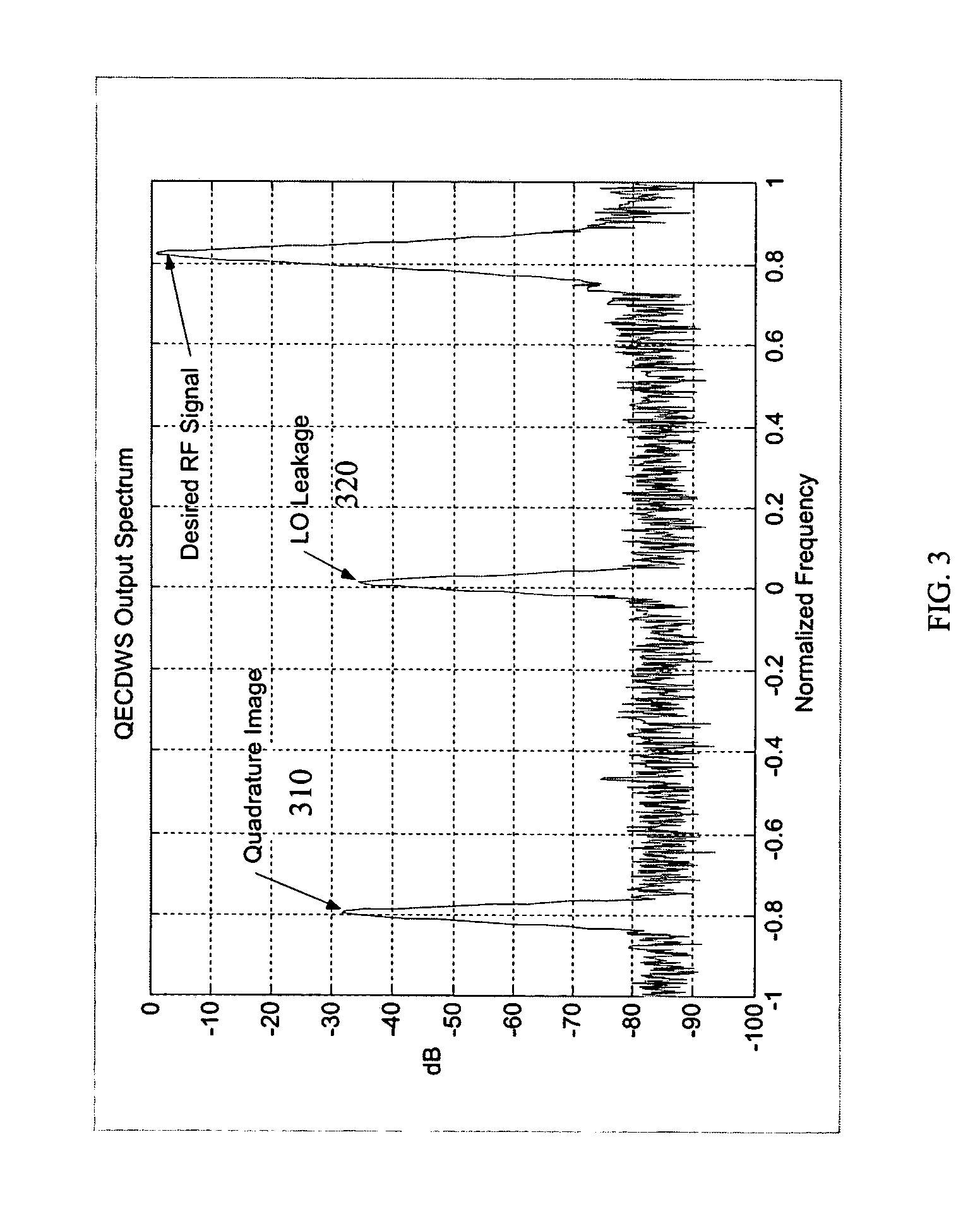Quadrature mixture LO suppression via DSW DAC noise dither
a technology of noise suppression and mixer lo, applied in the field of synthetic aperture radar systems, can solve the problems of inability to achieve precision dc bias for the purpose of mixer lo leakage suppression, and use of dithering
- Summary
- Abstract
- Description
- Claims
- Application Information
AI Technical Summary
Benefits of technology
Problems solved by technology
Method used
Image
Examples
Embodiment Construction
[0037]Referring to FIG. 2, a QDWS-based exciter 210 is shown that has been adapted for employing bandwidth multiplication in accordance with an embodiment of the present invention. The advantages of the present QDWS-based exciter 210 are very attractive when considering a system where bandwidth multiplication is not necessary. In other words, the QDWS output bandwidth, which can be from 70% to 80% of the QDWS clock frequency, generally satisfies the system RF bandwidth requirement. For a SAR, a 1 GHz QDWS can easily support range resolution capabilities on the order of 1-foot, without bandwidth multiplication. In this case, the RF frequency can be directly generated with the QDWS-based exciter 210 and quadrature mixer 220, greatly simplifying the analog portion of the exciter.
[0038]The preceding seems attractive, until the major faults of the QDWS-based exciter 210 are considered. Main limitations lie in the quadrature amplitude and phase balance and the LO to RF isolation of the qu...
PUM
 Login to View More
Login to View More Abstract
Description
Claims
Application Information
 Login to View More
Login to View More - R&D
- Intellectual Property
- Life Sciences
- Materials
- Tech Scout
- Unparalleled Data Quality
- Higher Quality Content
- 60% Fewer Hallucinations
Browse by: Latest US Patents, China's latest patents, Technical Efficacy Thesaurus, Application Domain, Technology Topic, Popular Technical Reports.
© 2025 PatSnap. All rights reserved.Legal|Privacy policy|Modern Slavery Act Transparency Statement|Sitemap|About US| Contact US: help@patsnap.com



